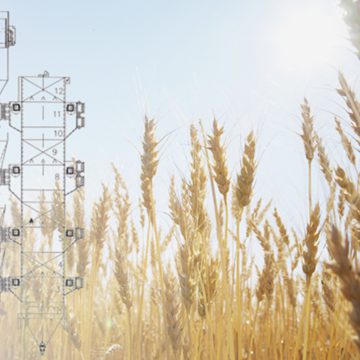Cereals like wheat, but also corn, soy beans, rice and other products are dried in a column dryer to mitigate the development of bacteria, mold, insects and mite and to ensure safe long-term storage. Weather circumstances and drying temperatures are important factors in the drying behaviour of cereals. Incorrect drying can easily cause cracks that can eventually lead to broken grains which cannot be sold as A-quality product.
The challenge
Our client needed to expand his drying capacity and invited Bodec to investigate if the efficiency of the existing drying equipment could be improved. The possible improvement was a crucial input factor for the design process of the new drying plant. If the drying temperature and drying time is adjusted to the weather circumstances and other factors, the efficiency of the system can be optimized. Bodec started with the development of a theoretic model to predict the efficiency of the column dryer.
The approach
For the development of these predictive models, Bodec has a strong cooperation with the Technical University in Eindhoven. First, Bodec collected data on the drying behaviour of the products. For this dataset, drying curves, sorption isothermes for the moisture balance and diffusion coefficients were determined. If the drying process is too fast, the grains can easily break. If the diffusion is too slow, it takes longer to reach the required moisture level and the dryer output will be lower. All datapoints were included in the base model developed by the University to validate the process results. The model successfully predicted the occurrence of cracks and broken grains as a result of moisture and temperature gradients in the product.
The result
Together with TU Eindhoven, Bodec developed a functional model to predict the drying behaviour for varying weather circumstances and product moisture gradients. A direct link was achieved between the predicted values and the actual final quality of the product. This new predictive model enables the client to optimize his drying process and to enhance the output of the existing dryer.
Later, this model was used to design a completely new dryer. With the optimized drying process, this new dryer could be built substantially smaller then initially planned.
The client now also uses the model to train his plant operators. It helps them to understand the effect of varying weather circumstances and process settings, enabling them to select the best drying temperatures for the best achievable production output.


